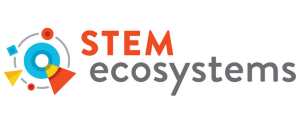Partnerships between business and educators bolstered by STEM Learning Ecosystems — STEM Learning Ecosystems
Members of 56 regional Ecosystems will gain specific instruction and tools to combine STEM learning in and out of classrooms to prepare students to succeed in the workforce

STEMEcosystems.org
KANSAS CITY, Mo. – Oct. 2, 2017 – PRLog — This week, the STEM Learning Ecosystems Initiative is gathering leaders from seemingly disparate groups to collectively address a significant challenge in North America: equipping students with valuable, marketable science, technology, engineering, and math (STEM) skills for coming workforce needs.
Led by the Institute for the Future, executives from Fortune 50 companies and members of the American Council of Chamber Executives will join science museum directors, librarians, National Urban League leaders, and school district administrators and teachers to lay out practical plans for the in- and out-of-school education that students need.
There are 56 STEM Learning Ecosystems across North America; they encompass dozens of science museums and libraries, multiple universities and community colleges, hundreds of business and industry partners ranging from entrepreneurial to Fortune 50, and hundreds of K12 school districts and afterschool programs that collectively teach more than a million students.
“Unlike many high-minded organizations, STEM Ecosystems is taking a hands-on approach to truly equip members to develop a high-quality local STEM workforce,” said Ronald Marlow, VP of Workforce Development for the Urban League. “The goal of this conference is to map out paths that make sense for ALL children in an area, by providing them with multiple paths for learning and thriving.”
“Working backwards from the short and long-term needs of local employers to education programs makes so much sense, and that is just what we are doing” said Bailey J. Siegfried, a Vice President at NORDAM, an aerospace company. “Businesses build their workforce from the surrounding area. Every business has the opportunity to take action and partner with each other and with schools to develop a pipeline of skilled employees.”
Not only will the attendees be collaborating with local partners, they’ll have the opportunity to share ideas and best practices from other STEM Learning Ecosystems across the country. For example, one local Ecosystem recently launched an after-school bicycle club in schools near the Mid-America Industrial Park. Students in the club are learning principles of engineering, mechanics, assembly, and teamwork as they work together on their bikes. “Those skills are all in high demand among the employers in our Industrial Park,” said Scott Fry, of the Mayes County STEM Alliance. “The idea for the club and the outline for its structure came from the STEM Ecosystem in Cincinnati. Using something as fun as bike assembly and repair to engage kids to understand practical engineering principles is fantastic! By implementing the established format of our partner Ecosystem, we saved valuable time and money in getting this program up and running and impacting kids.”
The October convening of the 56 STEM Learning Ecosystems will include a mix of education leaders in the community along with local leaders from the National Urban League, local Urban League affiliates, Workforce Investment Boards (WIB), Chambers of Commerce, and Economic Development agencies. The development and collaboration conference (and related travel) is underwritten by the STEM Funders wfv Network, which enables the work of STEM Learning Ecosystems.
“Helping the youth of America develop STEM skills to succeed in the global competition for jobs is important. We aren’t just saying that, we’re making it happen,” said STEM Learning Ecosystem co-chairs Gerald Solomon, Executive Director, Samueli Foundation, and Ron Ottinger, Director of STEM Next. “We aren’t setting lofty goals and waiting for the next generation to be impacted; we’re starting right now, with kids who are in school today. We are paying for community leaders to come together and learn from experts and each other. And we’re following that up with programs that will carry the impact into the coming years as well.”
“The ongoing support of STEM Learning Ecosystems enables events like these to have enduring impact,” said Jan Morrison, Executive Director at The Teaching Institute for Excellence in STEM education, which provides technical and program assistance. “We’ll continue working with communities and supporting their plans with personal connections, webinars, and practical training.”
The STEM Learning Ecosystems Initiative (http://stemecosystems.org/




